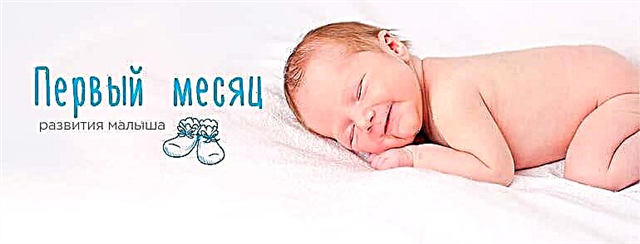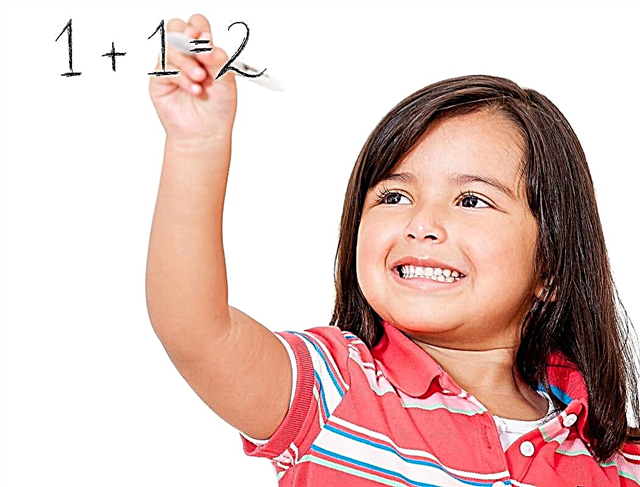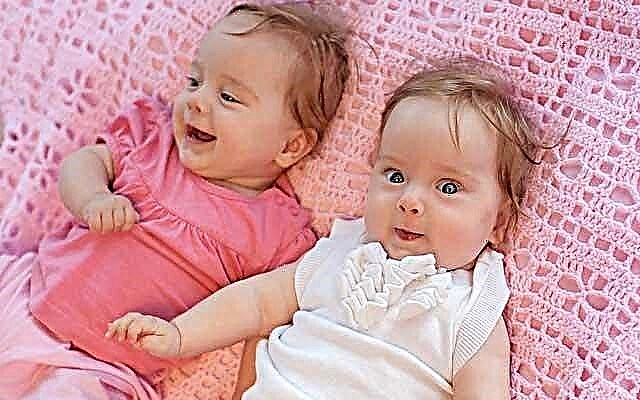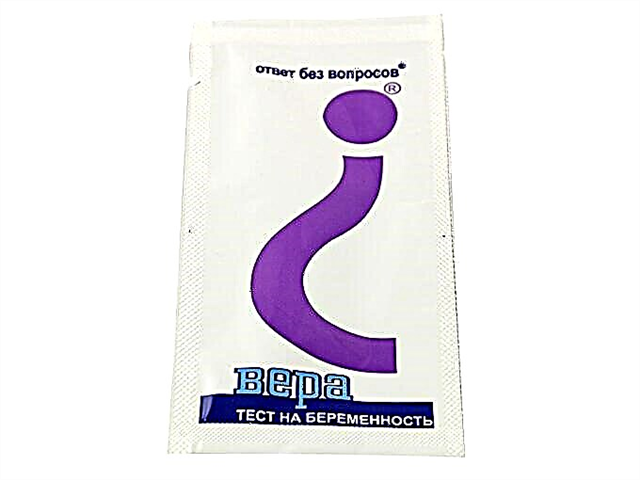Almost all young mothers recall their return from the hospital like this: “I put the baby in the crib and with horror realized that I didn’t know what to do next ...”... The first month of a child's life is a kind of "baptism of fire" for young parents.

Mom and baby first day at home
The stress of the first days when the parents were left alone with the child should be minimized. For this:
- Postpone all other matters not related to the adaptation of the child and family to new living conditions. Other things will wait!
- In the early days, keep visiting strangers (coworkers, neighbors, friends) to a minimum. While in the maternity hospital, the baby and mother were in a stressful situation: the baby, being born, adapted to new life conditions, and the mother experienced strong emotions - from incredible pain, fear, anxiety to peace and happiness. Therefore, once at home, both are in dire need of care, comfort and attention.
- On the first day of return, it is important for the mother and the baby to maintain the baby's feeding and sleeping regimen established in the maternity hospital.
- Right now, the mother will need the experience and skills in caring for the child, acquired by her in the hospital.
Do not be afraid if ...
 And now the baby is at home, and the parents have the opportunity to be constantly near and watch him. And then anxiety may arise: many small pimples have appeared on the nose and forehead, the complexion is red or yellowish, flaky skin has appeared, the arms and legs are bluish in color. Sometimes parents notice that the child's eyes seem to "run in different directions", are uncoordinated, or begin to "squint". Anxiety is caused by the child's periodic crying, and without the appearance of tears.
And now the baby is at home, and the parents have the opportunity to be constantly near and watch him. And then anxiety may arise: many small pimples have appeared on the nose and forehead, the complexion is red or yellowish, flaky skin has appeared, the arms and legs are bluish in color. Sometimes parents notice that the child's eyes seem to "run in different directions", are uncoordinated, or begin to "squint". Anxiety is caused by the child's periodic crying, and without the appearance of tears.
Yes, in fact, a newborn baby in the first month may have all these signs, but over time they will pass. This is the adaptation of the child to new conditions after the intrauterine stay.
A normal complexion will appear within a week, and tears in babies - after 3-4 weeks.
Do not be afraid if the head of the newborn has a slightly deformed shape. This is due to its passage through the birth canal. Over time, the head will take on a normal shape, for which it is enough to periodically turn the baby from one side to the other during sleep.
Crying is not always a symptom of a painful condition. By crying, the child draws attention to himself, asks for food, indicates discomfort and a desire to sleep. Literally, in a week, the mother will perfectly learn to recognize the baby's demands, transmitted through crying (why is the baby crying?).
Often a baby cries because of anxiety due to so-called intestinal colic, so we strongly recommend that you read the article Colic in infants what to do and how to treat? Because of colic, many mothers simply go crazy and do not understand, well, what worries their baby so much.
The baby can also be disturbed by gaziks: gaziks - how to help
IMPORTANT! We have prepared an article for you about the most common ailments of newborn babies - read the guide
Baby care
The first month of a child's life is an adaptation period that the newborn and the family go through. At the same time, there is a redistribution of responsibilities between parents and the rhythm of life of the whole family changes.
The most important and important thing that a baby needs now is care. It implies a number of procedures:
- Feeding;
- Sleep;
- Wakefulness;
- Bathing;
- Hygiene;
- Walking on the street;
- Tempering and massage.
Whether to set the mode to the child
A healthy child will establish the sleep-feeding-wake mode independently, depending on his physiology. Sleep (up to 2-3 hours), staying awake (30-60 minutes) and feeding are the main “work” of a newborn. Do not worry if the baby did not fall asleep, as you think, on time. The fact is that the biorhythms in newborns are so clearly debugged that parents can only maintain this rhythm, and having studied the behavior of the baby, they can very easily recognize the “requirements” of the child. By the end of the second month of life, the baby will have formed its own daily routine.
- Breastfeed on demand or by the hour
- How long does the child sleep?
- How much to feed the baby?
When to take your first bath
Bathing a newborn can be done after the umbilical cord has fallen off and the umbilical wound has healed. Until this moment, it is better to wipe the child, having previously prepared everything you need: warm water, a changing table, cotton balls, baby soap, diapers for wrapping, cream and powder.
Parents choose the bathing regimen in the first month of life on their own. The condition of the child's skin does not require daily bathing. This is, in most cases, a pleasant procedure for a newborn. However, not all children love to swim. In this case, do a daily rubdown. Bathing is enough 2-3 times a week. Herbal infusions can be added to the water. The use of soap is also determined individually, based on the sensitivity of the baby's skin.
- What water should I bathe my child in?
- Bathing baby in water with herbs
- The child is afraid to swim in the bathroom
Mandatory hygiene procedures
Hygiene procedures should be performed daily. This includes:
- Washing;
- Washing;
- Care of eyes, nose, ears;
- Skin examination;
- If necessary, treating the navel (How to treat an umbilical wound);
- Combing;
- Removal of seborrheic crusts on the head;
- Cutting marigolds on the toes and legs.
We read on the topic of hygiene and care:
- Proper hygiene of newborn babies
- Baby skin care
- Ear care
- Spout care
- Eye Care
The pediatrician tells why you can't use cotton swabs when you clean your baby's ears, how to choose a nozzle sucker, how to cleanse the head of a crumbs from seborrheic crusts, how to cut nails and clean the nose and ears. How to take care of baby's skin from the first days? And how to cut nails, which scissors to choose, how to clean the eyes of a child, and what to do when a newborn has snot.
Walking and hardening procedures are a guarantee of health
 Walking is essential in the development of a healthy baby. The newborn took the first breath of air upon leaving the hospital. Further walks will depend on the season and the temperature outside the window.
Walking is essential in the development of a healthy baby. The newborn took the first breath of air upon leaving the hospital. Further walks will depend on the season and the temperature outside the window.
The system of regulation of heat exchange in newborns is imperfect, so parents need to seriously approach the issue of walking in the cold season. In some cases, it makes sense to take the child out to the balcony for a few minutes or arrange for him to sleep with an open window.
Until sleep ends, the room should be warmed to normal temperature (See Optimum Room Temperature). Naturally, the child for such "walks" must be appropriately dressed. Dress and cover your child as you would, and add another layer (such as an extra blanket or blouse).
From the second week of life you can start air baths, hardening and massage, combining them in one procedure. To begin with, the baby can be left in a vest for literally 1 minute, making light strokes all over the body. If the child does not show discontent, this should become a daily routine. The massage serves as a strengthening and developing agent for the muscles.
Observe the child, study his behavior and in the future you will "feel" and easily understand him.
Reflexes of a healthy baby in the first month of life
The fact that the development of the child in the first month of life occurs in accordance with the established norms, parents can check at home themselves. Below are the basic reflexes found in healthy newborn babies.
- Grasping - the child reflexively grasps and holds what touches his palm.
- Searching and sucking - if you touch the baby's cheeks or hold the nipple around the lips, the baby turns its head and makes a sucking movement with its lips, looking for the breast.
- If you press lightly in the area of the toes, the toes will bend, and if you press lightly on the heel, the toes will fan out and the baby will move the foot.
- There is a reaction to a loud sound - the baby brings and spreads arms and legs.
- Swimming reflex - if the baby is put on his tummy, he makes movements similar to swimming.
- Imitation of walking - if the child is placed upright and the legs are supported, he will perform movements similar to walking.
We read in detail about reflexes of newborns - Reflexes are congenital
Reflexes of newborns. Olga Petrovna Tselekhovich - a doctor of the highest category tells what basic unconditioned reflexes should be normal in infants.
1) 0.10 - basic unconditioned reflexes of newborns,
2) 0.15 - newborn tone,
3) 0.40 - reaction to an adult who is nearby,
4) 0.48- external examination of the baby's head,
5) 1.07 - tremor in infants,
6) 1.24 - fontanelle in newborns,
7) 1.49- symmetry of folds in babies,
8) 1.57- sucking reflex,
9) 2.40- grasping reflex,
10) 2.49- Babkin's reflex,
11) 3.07 - plantar reflex,
12 3.47 - support reflex,
13) 3.55- walking reflex,
14) 4.30- crawling reflex,
15) 4.44- protective reflex of turning the head to the side,
16) 5.15- Moro reflex,
17 5.35- sneezing reflex,
Child's reactions and skills
The development of the child in the first month of life occurs as if imperceptibly, but constantly: when feeding, on walks, while awake, while bathing. And, first of all, when communicating with a mother, whom the baby is already beginning to recognize. He hears her voice, feels the intonation, the touch of her hands and, most importantly, reacts very sensitively to all actions. And if you trace the development of the baby of the first month, then you can determine the acquired reactions and skills of the newborn, namely:

- Determines the voice of the mom;
- May lie on his stomach for a short time, raising his head, and try to hold it (See article on laying on his stomach);
- Learns to fix the gaze on the subject;
- Listens when he hears a familiar voice (when he starts to hear);
- Begins to follow the movement of the rattle with his eyes and turn the head after it (when he begins to see);
- During wakefulness, the first sounds, puffing, grunting appear;
- The child begins to gurgle (See article we begin to gurgle);
- A reaction to a loud sound appears (shudders, freezes).
Mamalara: What a baby can do in 1 month
Read in detail: about the skills and abilities of the child in the first month
Read in detail: baby's day regimen at 1 month
Parents should check the anthropometric data of the child's development in the 1st month at the reception at the children's clinic.
2 month →



